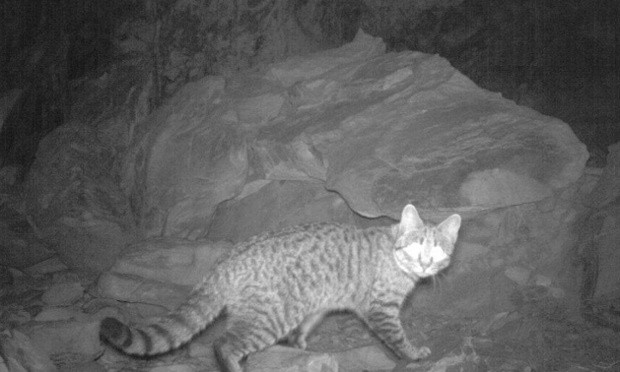Spotlighting and shooting
Spotlighting and shooting involves the safe use of firearms to reduce feral cat (and fox) numbers. This is useful for both protecting native species and reducing agricultural impacts of feral cats . Shooting usually takes place from a vehicle with the use of a spotlight and/or thermal sensors. It is most effective early in the evening when feral cats are most active along tracks, fencelines or around food sources such as tips or rabbit warrens. Feral cats can be identified from other species by their distinctive green eyeshine. Feral cats may be lured into shooting range with an auditory lure, such as the sound of a rabbit in distress or a cat call, or by waiting quietly at known areas that cats have been visiting.
Shooting is a potentially hazardous activity and steps should be taken to ensure the health and safety of all involved. Care must be taken and gloves worn when handling feral cats, to prevent exposure to toxoplasmosis and other diseases. PestSmart provide a Standard Operating Procedure for ground shooting of feral cats, which outlines the appropriate procedure to follow to ensure both human safety and animal welfare.
- Shooters must be licensed and comply with Firearms Act 1973
- Shooting must be undertaken in accordance with the Animal Welfare Act 2002, including not causing unnecessary harm. PestSmart provide a standard operating procedure for shooting which outlines appropriate techniques and equipment that can be used to achieve this.
- Landowner permission must be obtained prior to any shooting activity and neighbours should be informed so they can take appropriate action to protect any domestic cats.
Shooting works well when trying to reduce the feral cat population within a localised area, such as on a private farm. It is best suited to flat land, with open vegetation.
Feral cat control by shooting is often conducted in conjunction with trapping to increase overall effectiveness and can be used to target problem individuals, such as strong hunters who may avoid cage traps. It is useful to notify your neighbour when undertaking any feral cat control, as collaborative efforts across multiple properties are likely to be more effective.
Many NRM groups have introduced predator management strategies. Find your local NRM group or your local Recognised Biosecurity Group and get in touch for advice or assistance.
Read more from the PestSmart Model Code of Practice and the Glovebox Guide for Managing Feral Cats on the humane control of feral cats.
Image credits on this page
DBCA
Further Reading
Read more about feral cat control in our Bibliography




